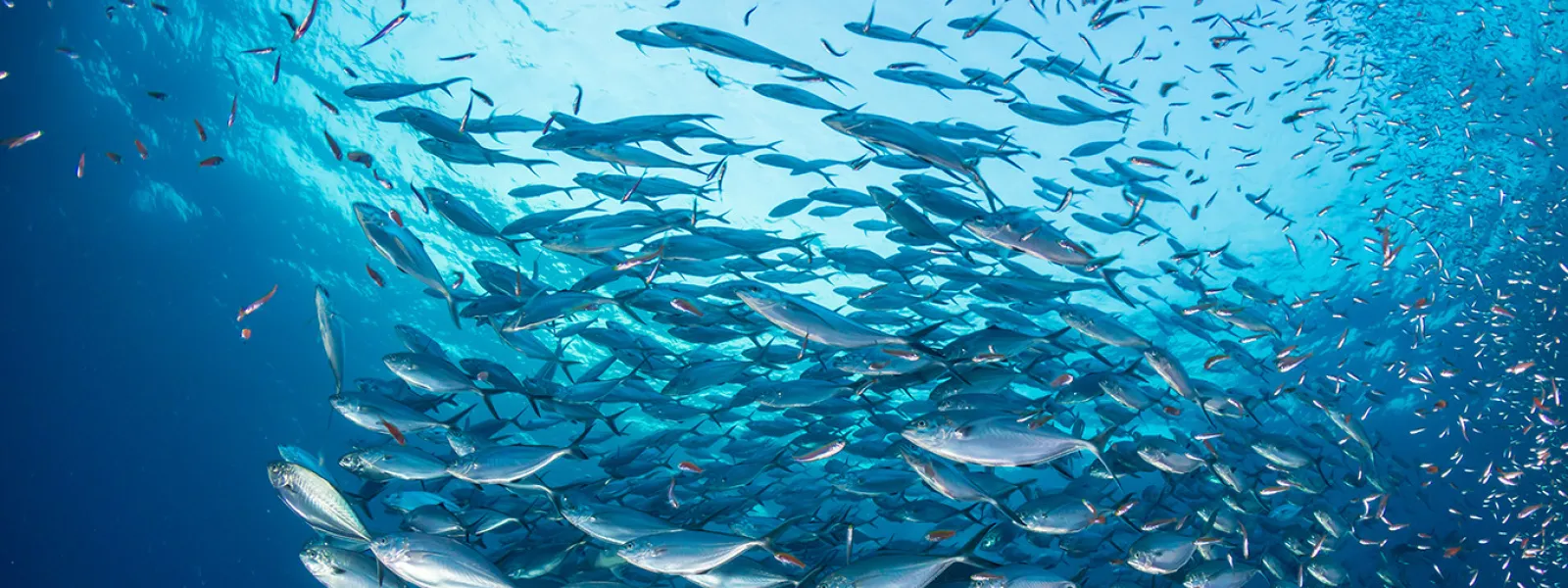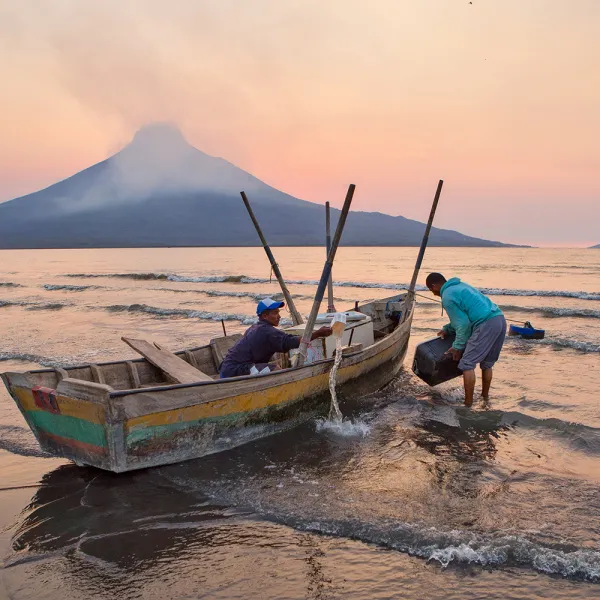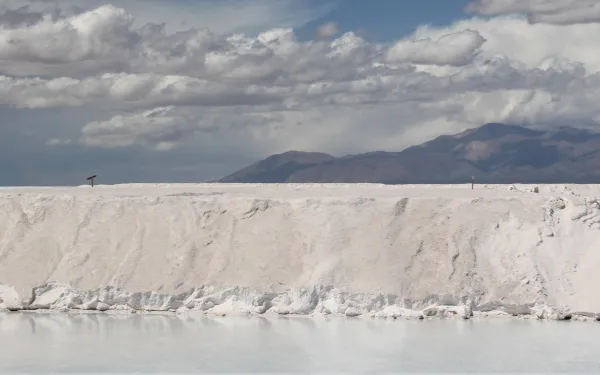
Project
ShutterstockTowards an end to subsidies that promote overfishing
Overfishing is one of the main problems for the health of our ocean. And the provision of negative subsidies to the fishing sector is one of the fundamental causes of overfishing.
Fishing subsidies are financial contributions, direct or indirect, that public entities grant to the industry.
Depending on their impacts, they can be beneficial when they promote the growth of fish stocks through conservation and fishery resource management tools. And they are considered negative or detrimental when they promote overfishing with support for, for example, increasing the catch capacity of a fishing fleet.
It is estimated that every year, governments spend approximately 22 billion dollars in negative subsidies to compensate costs for fuel, fishing gear and vessel improvements, among others.
Recent data show that, as a result of this support, 63% of fish stocks worldwide must be rebuilt and 34% are fished at "biologically unsustainable" levels.
Although negotiations on fisheries subsidies, within the framework of the World Trade Organization, officially began in 2001, it was not until the 2017 WTO Ministerial Conference that countries committed to taking action to reach an agreement.
This finally happened in June 2022, when member countries of the World Trade Organization reached, after more than two decades, a binding agreement to curb some harmful fisheries subsidies. It represents a fundamental step toward achieving the effective management of our fisheries resources, as well as toward ensuring global food security and the livelihoods of coastal communities.
The agreement reached at the 12th WTO Ministerial Conference provides for the creation of a global framework to reduce subsidies for illegal, unreported and unregulated fishing; subsidies for fishing overexploited stocks; and subsidies for vessels fishing on the unregulated high seas. It also includes measures aimed at greater transparency and accountability in the way governments support their fisheries sector.
The countries agreed to continue negotiating rules to curb other harmful subsidies, such as those that promote fishing in other countries' waters, overfishing and the overcapacity of a fleet to catch more fish than is sustainable.
If we want to have abundant and healthy fishery resources, it is time to change the way we have conceived fishing until now. We must focus our efforts on creating models of fishery use that allow for long-term conservation.
Partners:


Call for a paradigm shift in EU Raw Materials Policies from a Latin American perspective
The growing global demand for transition minerals—including lithium, copper, and nickel—driven by the current energy transition model, but also by the expansion of the digital economy, data infrastructure, and the military and aerospace industries, is causing irreversible ecological damage and violating fundamental human rights across the territories of the Global South. Latin America is the most biodiverse region on the planet and one of the richest regions in cultural diversity. It is home to numerous indigenous peoples who inhabit and safeguard these territories. At the same time, it contains significant mineral deposits, creating an intersection between the growing global interest in mineral extraction and fragile ecosystems and territories of traditional and indigenous communities, such as the Amazon and the Andean wetlands. This scenario exacerbates climate vulnerability and creates the conditions for the emergence of socio-environmental conflicts, compromising the ecological and cultural integrity of these territories. The push for scaling up extraction contradicts multilateral frameworks as well as climate and biodiversity commitments that the EU has subscribed to. This tendency bears the risk of reproducing the same patterns of global inequality and climate damage these policies claim to overcome. The Alliance for Andean Wetlands calls on the European Union to adopt measures for a paradigm shift towards Raw Materials Policies that do not perpetuate inequalities and harm people and ecosystems, by: 1. Ensuring full compliance with its binding international human rights obligations and maintaining its high standards of human rights and environmental due diligence. The current debates on deregulation raise concerns about the EU's seriousness in implementing human rights and environmental safeguards along minerals value chains and in global gateway projects. In this context, the EU should not support: (i) the weakening of the provisions of the Corporate Sustainability Due Diligence Directive (CSDDD), an essential lever for holding EU companies accountable for their activities within and outside the region; and (ii) the privatisation of the implementation of international human rights and environmental standards. All forms of corporate self-regulation, such as multi-stakeholder initiatives, industry schemes, or third-party audits, are insufficient to demonstrate compliance with these standards and may undermine states' and companies' obligations. In this regard, legal frameworks should be sufficient to guarantee that corporations are held liable throughout the supply chain of critical minerals according to EU directives. This is a particularly sensitive question as it also challenges the existing regional human rights system, represented by the Inter-American Court of Human Rights, which has produced valuable precedents and jurisprudence on the matter for the past 45 years. 2. Guaranteeing maximum transparency, access to information, and inclusive participation of affected communities and civil society in the Global South. Ensuring early and effective involvement of civil society and indigenous and local communities affected by strategic projects, strategic partnerships, global gateway, and other initiatives. This involves guaranteeing the right to self-determination; to free, prior, and informed consent (FPIC) of indigenous peoples, and the respect for their right to say ‘no’ (RTSN). Undermining the voices from local communities and civil society increases social, ecological, and operational risks, especially mining projects likely to entail cumulative or long-term environmental impacts, particularly those involving extraction methods with potentially significant adverse effects on water, such as direct lithium extraction (DLE) or evaporation techniques. In contrast, including them is not only ethical but also essential for a just transition, the long-term viability of projects, and for preventing companies from facing future legal liabilities. 3. Challenging the projections of transition raw materials demand and rapidly adopting policies to reduce the production and consumption of primary minerals in the EU. The EU should set binding, ambitious, and measurable targets on energy and material reduction, taking into account planetary boundaries. In addition, conducting a prior, comprehensive, and independent strategic assessment of minerals needs and of alternatives to their extraction is essential to uphold the principle of proportionality, achieve climate objectives through less harmful means, and avoid irreversible damage to communities and ecosystems. Moreover, the EU should also foster more comprehensive circular economy strategies that take into account local economies and the biophysical limits of the ecosystems. Download the document
Read more
Protecting the Environment Through Collaboration: A Community Science Experience
When environmental damage occurs, the first warning often comes from the people or communities directly affected. Residents living near a river are usually the first to notice waste being dumped or fish dying when the water is polluted. Similarly, who live near an open pit mine are the who see when illness becomes more common or when water begins to run scarce.One powerful way to turn lived experience into scientific evidence is through community science. This approach allows people to share, validate, and integrate local knowledge into scientific research and efforts to defend their territories.At AIDA, we believe in the power of science to advance environmental justice. That’s why we generate and apply scientific knowledge in the legal cases we support. Recently, we had the opportunity to take part in a community science initiative that helped us reflect on—and learn from—the value of this collaborative methodology and the shared knowledge it produces. Local Knowledge: A Powerful Response to Environmental Degradation In April 2024, at the request of the Poqomam Maya community of Santa Cruz Chinautla—a village near Guatemala’s capital—AIDA senior scientist Javier Oviedo and attorney Bryslie Cifuentes carried out a field visit to gather information and assess the solid waste pollution that has affected the community for years.One of their main objectives was to identify illegal dump sites on the banks of the Chinautla River. The disposal of waste and debris in this area has contaminated both the soil and waters of this tributary of the Motagua River, the longest river in Guatemala.While preparing for the trip, Javier realized the team would face several challenges. The time available would not be enough to collect all the necessary data, and the team’s limited familiarity with the area could make locating the dumpsites difficult and potentially unsafe.Then Javier had an idea: to involve members of the community in supporting the team with this task.His plan made perfect sense—after all, who better to locate the illegal dumpsites than the people who know the territory best? Beyond that, by witnessing the impacts of pollution firsthand, community members could also appreciate the importance of documenting these issues.I spoke with Javier about how this idea came about, and he shared the following: Beyond seeking support from community members, this approach was rooted in a recognition of the irreplaceable value of their knowledge as residents of their territory. How the Work Was Carried Out Javier’s idea was that, with the help of an accessible and easy-to-use mobile app, community members could send information about illegal landfills directly to the AIDA Science team, who would then validate and analyze the data.To make this possible, the team designed a form specifying the data they needed to collect: the location of the landfill, its dimensions, the type of waste identified, associated social issues, and other relevant details.In Chinautla, two community residents, along with authorities from the Poqomam Maya village, visited several landfills they had previously identified with Javier and Bryslie. During these visits, Javier showed them how to use the app and fill out the form. Later, one of the residents continued the process independently.Thanks to this collaborative effort, data was collected on 10 of the most critical illegal dumpsites. While this does not capture all of them—unfortunately, many more exist—this sample allowed the team to estimate the extent of waste and debris pollution in the community and to illustrate how poor management has exacerbated the problem.The information gathered was crucial in highlighting the severity of the pollution, demonstrating the continued use of illegal dumping, and exposing the municipal authorities’ failure to meet their legal obligations regarding waste management.This evidence formed the basis for the lawsuit the community filed against the municipality of Chinautla in October 2024, citing the lack of measures to address river and soil contamination caused by inadequate waste management and illegal landfills. In June 2025, an appeals court ordered the municipality to take action to address the serious environmental crisis affecting the community. Lessons Learned from the Experience According to Javier, involving the people of Chinautla in a knowledge-building process led to mutual learning.For community members, it meant acquiring new technological skills. For the AIDA team, it prompted new questions about how to move knowledge-sharing with a community beyond simple collaboration.Javier summarized his learnings in three points: At AIDA, science is a core part of our work and a key element of the strategic litigation we pursue to protect and defend a healthy environment across Latin America. Involving the communities we support in this process broadens our perspective, allowing us to integrate their knowledge and experiences into the science we seek to build.
Read more
Science in the Service of Environmental Justice
By David Cañas and Mayela Sánchez* Science—or rather, the sciences—are the systems of knowledge that different social groups have developed over time to describe the phenomena of nature and society. Thanks to these knowledge systems, humanity has been able to find solutions to countless challenges, and today, more than ever, they must respond to global crises such as climate change, pollution, and biodiversity loss.Understanding ecosystem processes is essential for protecting the environment and providing verifiable, replicable evidence of natural phenomena and the impacts of human activities. It also enables the development of innovative solutions to protect and restore the environment.For science to contribute meaningfully to environmental justice—a concept centered on ensuring that all people enjoy a healthy environment—scientific work must be grounded in the realities of the people and communities affected by environmental degradation, who live in or rely on ecosystems vulnerable to harm. It must also be built on empathy and respect for other forms of knowledge, while seeking to reduce social inequalities.At AIDA, science is a central part of our work, supporting and complementing the strategic litigation we pursue to protect a healthy environment in Latin America. Through science, we can demonstrate the environmental impacts caused by human activities and hold those responsible accountable. How Do We Do Science at AIDA? The AIDA scientific team is a multidisciplinary group of professionals specializing in diverse fields, including geography, geology, biology, marine biology, oceanography, anthropology, and economics.Among other tasks, they collect and develop scientific evidence to strengthen the legal arguments in the cases we support across our various lines of work—from protecting the ocean and other critical ecosystems to defending human rights, such as the right to health and access to safe drinking water.The strategic use of science has been central to AIDA’s work since the organization was founded more than 25 years ago. One early example is the case of La Oroya in Peru, where a group of residents sued the government for failing to protect them from decades of heavy metal pollution caused by a metallurgical complex.Then we did something that had not been done before: we connected existing studies with the lived reality of La Oroya. This approach allowed us to demonstrate the relevance of the case and establish a clear link between pollution and its impact on the health of the city’s residents. Our analysis, compiled in the report La Oroya Cannot Wait, served to build the legal case and formulate proposals to the Peruvian government for corrective and preventive measures to address the problem. In 2024, in a decision that set a historic precedent for state oversight of industrial pollution, the Inter-American Court of Human Rights held the Peruvian state responsible and ordered it to adopt comprehensive reparations measures. Among the scientific team’s more recent contributions is a geospatial analysis of the Salar del Hombre Muerto in the Argentine provinces of Catamarca and Salta. Using maps and satellite imagery, the team documented water loss in this ecosystem caused by lithium mining.Another example is the expert report on solid waste pollution in the tributaries of the Motagua River in Guatemala, in which we recorded and characterized illegal dumps along the banks of the Chinautla River. This work enabled the affected communities to gather the evidence needed for the lawsuit they filed against the municipality of Chinautla for failing to address the contamination of rivers and soil caused by inadequate solid waste management. The Right to Science When science serves social and environmental justice, its benefits extend to everyone. This purpose was recently upheld by the Inter-American Court of Human Rights in its Advisory Opinion 32, which recognizes the “right to science” as the right of all people to enjoy the benefits of scientific and technological progress, as well as to have opportunities to contribute to scientific activity without discrimination.The Court also recognized indigenous, traditional, and local knowledge as equally valid forms of knowledge. This acknowledges how the deep understanding that indigenous peoples and local communities have of their environment—their worldview based on respect and interdependence, and their spiritual connection to nature—has been fundamental to ecosystem conservation.As an organization that uses science as a tool for environmental protection, we believe in a science that embodies these principles: one built on dialogue between different forms of knowledge, whose benefits reach all people, and which contributes to the socio-ecological transformation the planet urgently needs. *David Cañas is AIDA's Interim Director of Science; Mayela Sánchez is our digital community specialist.
Read more